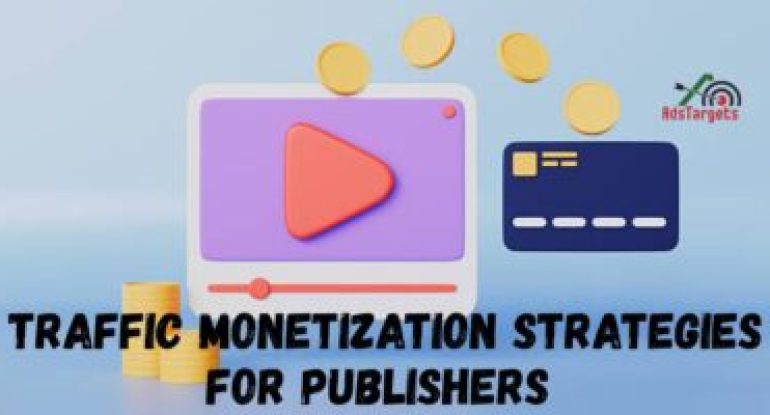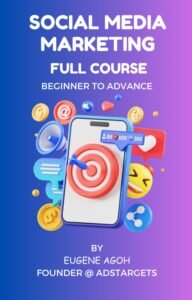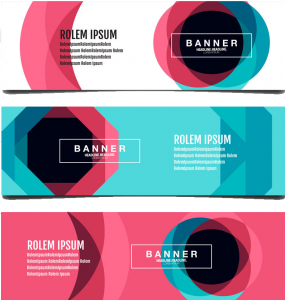In today’s fast-moving digital world, publishers are in a constant scramble to turn content into cash. Finding solid, sustainable ways to turn content into cash is no longer just a nice-to-have — it’s survival mode for businesses. But here’s the kicker: a lot of the “tried-and-true” methods for site monetization? They’re starting to feel like old news.
We’re seeing ad revenue on the decline, conversions nosediving, and banner ads being ignored like yesterday’s leftovers. Toss in a clunky user experience filled with slow load times and annoying popups, and it’s no wonder visitors bounce before they even see the value of your content.
So what’s the move? How do you stay in the game without annoying your audience or tanking your traffic? The answer lies in smarter, more adaptive monetization strategies for publishers — ones that keep user experience top of mind while still bringing in revenue.
One of the freshest and most promising players in the space? Commerce media. Let’s unpack how this modern approach is flipping the script on monetization strategies for publishers, and why it might just be the upgrade you’ve been waiting for.Let’s break it down.
Table of Contents
ToggleWhat’s Publisher Monetization, Really?

Publisher monetization is all about turning eyeballs into income. If you’re running a website, blog, or any digital platform, this simply means finding smart ways to make money from the traffic you’re already getting. And that’s where monetization strategies for publishers come into play — we’re talking ad placements, affiliate links, sponsored content, and more.
It’s not just about slapping ads everywhere and hoping for the best. In today’s digital ad jungle, keeping the lights on and the content flowing means thinking smarter and earning more from what you’ve already built. With hosting bills, content production costs, and site maintenance stacking up, finding the right mix of revenue streams isn’t optional — it’s mission critical.
The good news? You’re no longer stuck in Google’s shadow or dependent on outdated, black-box ad networks. These days, publishers can connect directly with premium brands, tap into bigger ad budgets, and do it all in a way that’s actually transparent.
One of the rising stars in this space is commerce media. It’s changing the game by helping publishers slide naturally into the buying journey of their visitors — no pushy popups, no irrelevant ads. Just helpful, well-placed content that boosts engagement and brings in cash.
Even better? It’s plug-and-play simple. No tech headaches. You bring the traffic, advertisers bring the budgets, and everyone wins. Users see content that actually makes sense for them, and you, the publisher, finally start maximizing what your traffic is really worth.
Now that’s one of the monetization strategies for publishers worth digging into.
Who Can Monetize Their Content?

Let’s flip the question on its head: Why aren’t all publishers using commerce media to monetize? That’s the real head-scratcher here. Because truth be told, monetizing content isn’t just a “big publisher” game anymore. If you’ve got an audience and content people care about, there’s money to be made — and monetization strategies for publishers like commerce media are making it easier than ever to cash in smartly, not desperately.
Let’s break it down by platform:
#1. Content Sites (Blogs, News Portals, and Everything In-Between)
If you’re running a content site, you’ve already got the goods — valuable info, loyal readers, and organic traffic. So why not turn that into steady income? With targeted ads and affiliate marketing baked right into your layout, you can start generating revenue without sacrificing the quality of your content. It’s not about stuffing your site with banners — it’s about using monetization strategies for publishers that actually fit your content. Commerce media lets you serve ads that match your readers’ interests, keeping your user experience smooth and your readers happy (and coming back for more).
#2. Apps and Browser Extensions
App and extension developers, listen up — monetizing isn’t just about charging users upfront. Whether it’s in-app ads, premium options, or partnerships with brands that align with your features, there’s room to grow your income stream without bloating your UX. Commerce media can slide into your existing setup, delivering relevant offers at the right time, without interrupting how users interact with your tool. That extra revenue helps cover development costs, keeps your updates rolling, and gives you more room to experiment and innovate.
#3. Browsers and Search Engines
Search engines and browser platforms are in a prime spot to monetize — they literally control the gateway to the internet. By embedding commerce media into the browsing experience, they can turn every search into a revenue opportunity. We’re not talking spammy pop-ups. We’re talking clean, relevant brand placements and personalized offers that actually make users’ lives easier. Bonus: it gives these platforms room to offer more free tools or services, since the ad dollars are covering the tab in the background.
And here’s where commerce media shines — it responds in real-time to user queries, serving up helpful suggestions and offers while the user is still typing. It’s quick, intuitive, and genuinely useful. That’s a win-win.
#4. Buy Now, Pay Later (BNPL) Platforms
BNPL services have come a long way from just splitting up payments. These days, they’re acting like smart product discovery engines. And thanks to commerce media, they’re turning those discovery moments into revenue. By partnering with retailers and integrating affiliate models or ad placements, BNPL platforms can monetize traffic without pushing users away.
It’s a slick move — users get value through flexible payments and discovery, while the platform earns a little extra every time someone finds (and buys) what they’re looking for. Plus, BNPL tools are now doubling as price comparison hubs, so plugging in commerce media ads just feels like a natural extension of their purpose.
#5. Email Services
You’d think email was old-school, but it’s still prime digital real estate. And no, we’re not talking about those tired email blasts — we mean integrating commerce media right into the email interface. Think subtle brand placements, smart sponsored suggestions, or native ads that show up as you scroll your inbox. Users barely notice they’re ads, because they feel more like helpful nudges.
This approach boosts engagement and lets email service providers cash in without annoying users. It’s understated, intuitive, and one of the smarter monetization strategies for publishers in today’s crowded digital space.
#6. Social Media Platforms
Social platforms practically run on user attention — and that attention is valuable. While targeted ads and influencer campaigns already pull in big bucks, commerce media takes it a step further by plugging directly into the trust users place in content creators. Influencers can monetize without sounding like a sales pitch — they just weave product suggestions seamlessly into their content, and commerce media does the heavy lifting behind the scenes.
And the platforms themselves? They can deliver product recommendations or branded content in a way that fits organically into users’ feeds. More trust, more relevance, more clicks — and, of course, more revenue.
At the end of the day, if you’ve got an audience, you’ve got monetization potential. Commerce media isn’t just another ad solution — it’s a smarter, more user-friendly way to earn. And with so many options on the table, there’s never been a better time for publishers of all shapes and sizes to rethink how they turn content into cash.
Best Monetization Strategies for Publishers

#1. AI-DRIVEN CONTEXTUAL COMMERCE
Among all the shiny new tools AI has brought into the digital publishing world, AI-driven contextual commerce is easily one of the hottest. It’s like giving your content a sixth sense—one that knows exactly what your readers want and drops in product suggestions, affiliate links, and shoppable content without you lifting a finger.
Basically, it reads the room (aka your article) and tailors product placements to match both the content and the reader’s behavior. We’re talking personalized product galleries, seamless affiliate integration, and native ads that don’t stick out like a sore thumb. It’s automation with brains.
If you’re tired of manually hunting for relevant affiliate links or constantly tweaking your ad placements, this one’s a game-changer.
Why it matters?
It saves you time, earns you more, and makes the shopping experience smoother for your readers. It’s a win-win-win. And as monetization strategies for publishers go, this one’s a heavy hitter because it blends monetization right into the reading experience—without turning your site into a walking billboard.
Real-life Example
Take The Streaming for instance. Their editorial team used to spend hours trying to match products with stories and optimize links for conversions. But with AI Shopping Galleries? Boom—done automatically. Now they can stay in their creative lane while the AI handles the money side of things in the background.
The tech identifies the perfect product match for each article, places it in a visually appealing gallery, and optimizes links for the best returns. So readers get value, brands get sales, and publishers get paid — all while keeping the content experience slick and focused.
Tools to check out
If you want to get in on this AI-powered action, there are plenty of platforms making it plug-and-play:
#1. GumGum – Uses contextual intelligence to match ads with page content perfectly.
#2. StackCommerce – Ideal for curated commerce and branded storefronts.
#3. Tipser – Great for adding native shopping features directly into your content.
#4. Skimlinks – Automates affiliate links across your site effortlessly.
#5. Sovrn //Commerce – Powerful AI-driven commerce tools that sync up with your audience’s intent.
#6. Taboola Commerce – Combines native ads and shopping intelligence for a seamless monetization layer.
If you’re looking for monetization strategies for publishers that don’t slow you down or compromise your content, AI-driven contextual commerce should be high on your list. It’s smart, scalable, and most importantly — it keeps your content feeling clean and natural. Let AI do the product placement while you focus on what you do best: creating content that clicks.
Want help figuring out which tool fits your setup best? Hit me up, and we’ll map it out together.
#2. WEB3 SUBSCRIPTION MODELS
So, what’s the deal?
Web3 is no longer some far-off futuristic buzzword — it’s becoming a real revenue magnet, especially for digital publishers who are ready to shake up the old subscription playbook. Thanks to blockchain, publishers now have more control over how their content is accessed, distributed, and monetized — and honestly, that’s a breath of fresh air.
The stars of the show here? NFT-based memberships and token-gated content. These aren’t just trendy terms — they’re full-blown game-changers when it comes to monetization strategies for publishers. Instead of charging users a flat monthly fee like old-school subscriptions, you can mint NFTs that act like digital VIP passes. Holders get access to members-only perks like premium reports, gated articles, exclusive Discord communities, behind-the-scenes insights, or early-bird drops — and here’s the kicker — they can resell their access later if they want. Now that’s value.
Real-world example
Take CryptoSlate. They’re not just another crypto news site—they’ve gone full Web3 with it. They offer an NFT-based deep research membership that unlocks exclusive content, and guess what? Access is only granted in exchange for Solana tokens. That means the gate to their top-tier insights isn’t a boring username and password — it’s a token sitting in your digital wallet.
This kind of model makes the subscription feel like ownership. It’s not just about paying for access — it’s about being part of the club.
Tools of the trade
Want to ride the Web3 wave? Here are some platforms that’ll help you get set up faster than you can say “mint it”:
#1. Unlock Protocol – One of the go-to tools for setting up NFT memberships and paywalled content.
#2. Mirror.xyz – Great for bloggers and writers looking to tokenize their content and build loyal followings.
#3. Manifold.xyz – Offers custom NFT minting with creator-first features.
#4. Zora – Perfect for turning media content into collectible, tradable NFTs.
#5. Access Protocol – Built specifically for digital publishers who want to ditch paywalls for token-gated access.
These tools make integrating Web3 features into your site feel a lot less like rocket science and a lot more like stacking smart revenue streams.
As monetization strategies for publishers continue evolving, Web3 opens the door to ownership-based engagement. Your readers aren’t just passive subscribers anymore — they become stakeholders in your content economy. That adds a whole new layer of loyalty and community around your brand.
And let’s not forget: with resale options baked into NFT memberships, you’re offering your audience value that goes beyond content — you’re giving them digital assets with potential resale value. That’s next-level monetization wrapped in exclusivity.
Web3 subscription models are flipping the script on how publishers earn. If you’re ready to future-proof your revenue and build a more engaged, empowered audience, now’s the time to dive in.
#3. MICRO-MONETIZATION – TURNING SMALL INTERACTIONS INTO STEADY REVENUE

What’s the scoop?
Not every reader is ready to dive headfirst into a full-blown subscription — and that’s okay. That’s where micro-monetization steps in and works its magic. Think of it as the low-commitment first date before the long-term relationship. You let readers toss a couple of bucks your way for a single article section, exclusive tip, or highlight — and if they like what they get, chances are they’ll come back for more.
It’s like offering a sample at the bakery — one bite, and suddenly they want the whole cake.
This model is perfect if you’re just starting out or want to give your audience a little more freedom in how they support you. And guess what? It fits right into modern monetization strategies for publishers who want to build loyal communities without shoving a paywall in every reader’s face.
A real-world gem
Let’s talk about Dylane Moreau from The Perfect French with Dylane. She’s not locking all her content behind a wall. Instead, she adds Support My Work or Donate buttons throughout her site. It’s simple, honest, and surprisingly effective. Her readers — who love her language tutorials — can drop a few coins as a thank-you without feeling pressured. And little by little, that adds up.
That’s the beauty of micro-monetization. It’s not flashy — but it’s steady. It helps creators keep the lights on while slowly warming their audience up to the idea of bigger commitments.
Tools that make it happen
If you’re ready to dip your toes into this micro-money-making pool, here are some tools that make it easy as pie:
#1. Buy Me a Coffee – A fan-favorite for creators to receive small donations or tips with a personalized thank-you.
#2. Ko-fi – Great for offering small, one-off perks or setting up tip jars.
#3. Tip.cc – Popular in Discord communities and crypto spaces for easy tipping.
#4. Kit – Allows creators to share product kits and get tips on purchases.
#5. Nichely – Perfect for niche content creators looking to gate small pieces of content.
#5. Kive and Coil – Enable creators to receive payments per second or per content interaction — great for streamers and bloggers.
All these tools are plug-and-play, meaning you don’t need to be a tech whiz to get rolling.
Why this works
Here’s the deal — micro-monetization isn’t about hitting the jackpot overnight. It’s about building trust, one small transaction at a time. It’s a clever way to monetize casual readers who may not be ready for a full subscription but still find value in what you’re offering.
In fact, when you’re mapping out monetization strategies for publishers, this approach is a fantastic add-on — especially when paired with other models like affiliate links or native ads. It keeps the cash trickling in without alienating users who just want to dip in and out of your content.
Micro-monetization is low effort, high charm. It lets your readers support you at their pace, while you keep delivering value without locking everything up. And over time, those small tips and pay-per-snippets can turn into a surprisingly solid income stream.
So go ahead, add that “Buy Me a Coffee” button — your next loyal subscriber might just be a single tip away.
#4. LIVE COMMERCE AND SHOPPABLE VIDEO
What’s it all about?
Imagine your audience is watching a product demo, tutorial, or review — and just when their interest peaks, BAM — they can click and buy right from the video. That’s live commerce and shoppable video in action. It’s like blending your content with QVC on steroids. Interactive, instant, and irresistible.
This strategy lets you tap into impulse buying and real-time engagement, turning passive viewers into active customers — all while keeping them glued to your site. If you’re thinking about modern, immersive monetization strategies for publishers, this one’s a game-changer.
Real-world example
Check out Narcity. They took their storytelling game to a whole new level by embedding video-powered “stories” that users could shop from directly. The result? A mind-blowing 48x increase in video plays and a 52% jump in how long folks stuck around. That’s the kind of engagement that makes advertisers (and your bank account) grin.
Tools that make it happen
Firework – Embed short-form, TikTok-style videos that people can shop from.
#1. Livescale – Built for brands and publishers ready to go live and sell in style.
#2. Bambuser – Smooth as butter for live shopping and interactive product showcases.
#3. Shoploop (by Google) – Think YouTube meets checkout — direct, quick, and conversion-friendly.
This isn’t just selling — it’s storytelling that sells. And it fits beautifully into forward-thinking monetization strategies for publishers looking to stay ahead of the curve and offer something fresh.
Both of these strategies — AI ad optimization and shoppable videos — are perfect examples of letting tech do the heavy lifting while you focus on delivering value. Whether you’re squeezing more juice out of your ad inventory or turning video views into cha-ching, they each pack a serious revenue punch.
#5. SPONSORED UI ELEMENTS & AD-INTEGRATED SEARCH BARS
Here’s the lowdown:
When we talk about online ads, most folks immediately think of the usual suspects — banner ads, pop-ups, or flashy native placements. But here’s the thing: there’s a whole treasure chest of monetization opportunities hidden in plain sight, right inside your website’s own design.
We’re talking about the sneaky-smart strategy of turning your user interface into ad real estate. Yep — those quiet little spots like your navigation bar, search box, menus, or even chatbot prompts can be subtly (and profitably) sponsored. These elements sit smack-dab in the middle of user interactions, so slipping branded content in there? That’s like putting up billboards on the busiest street in town.
For anyone trying to beef up their monetization strategies for publishers without overcrowding their site or annoying users, this tactic is a no-brainer. It’s stealthy, it’s user-friendly, and it brings in real revenue.
Real-world example
Take Front Office Sports — these folks added search and chatbot tools that weren’t just functional; they were monetized. Instead of just pointing readers to more articles, their UI pointed them toward sponsored content, keeping readers around longer and opening up new streams of ad revenue. The results? More time-on-site, more engagement, and yes — more money in the bank.
That’s the beauty of this strategy: users don’t even realize they’re part of a monetization funnel because it’s baked right into the experience.
Tools to get you rolling:
#1. Direqt – Conversational chatbots that offer branded content without being pushy.
#2. Monetate – Smart personalization meets monetization.
#3. SearchSpring – Adds sponsored results to your internal search like a pro.
#4. Algolia – Lightning-fast search with options for integrating monetization layers.
Why it’s worth your time
This strategy is like turning every corner of your site into a revenue opportunity — without stuffing it with obvious ads. You’re simply taking elements that users already interact with and using them to guide eyeballs toward sponsor-backed links or branded suggestions.
When you’re building out your suite of monetization strategies for publishers, don’t sleep on your UI. It’s often the most underutilized space, even though it’s prime real estate. Sponsored UI elements and ad-integrated search bars let you cash in without cluttering the vibe.
Sometimes the secret sauce isn’t in adding more content or flashy promos — it’s in smartly tweaking the pieces you already have. Your site’s design can do double duty: keeping users engaged and making you money. Now that’s what we call a win-win in the world of monetization strategies for publishers.
#6 AI-GENERATED SYNTHETIC VOICES

Here’s the scoop
Not everyone has the time (or patience) to sit and read an article, no matter how juicy the content is. That’s where AI-generated voices swoop in like a digital superhero. Publishers are now giving their stories a voice — literally — by using AI to turn written content into natural-sounding audio.
It’s like having a personal newsreader in your pocket, minus the coffee breath. Whether it’s news, long-form features, or even niche explainers, AI-powered narrators can read it aloud while your audience is on the go — in the car, cooking, or fake-listening during Zoom calls.
This isn’t just about accessibility. It’s about unlocking a new layer of revenue. Smart publishers are tying this audio content to premium subscriptions, ad spots, or even licensing opportunities for synthetic voices. In short? Your content works overtime, and your wallet gets heavier.
Real-world example
Check out The Stanford Daily — they’ve added AI-powered narration across their articles, letting readers listen instead of scroll. It’s inclusive, convenient, and clever. Plus, it opens the door for sponsored intros, mid-roll ads, or even “audio-only” exclusives.
Bonus? Some platforms even let voice actors license their synthetic voice to publishers — meaning even the voice talent gets a piece of the pie. Now that’s what we call a win-win-win.
Tools That’ll Do the Talking for You:
#1. Narrativ – Great for turning stories into immersive audio narratives.
#2. Ad Auris – Auto-generates narrated audio for news sites.
#3. WellSaid Labs – Studio-quality synthetic voices that sound eerily human.
#4. Play.ht – Text-to-speech magic with monetization features baked in.
#5. Resemble AI – Clone voices, build unique ones, and monetize the output.
#5. BeyondWords – Built for publishers looking to turn content into cash through audio.
Why it should be on your radar
Adding voice to your content isn’t just trendy — it’s one of the most underrated monetization strategies for publishers. You’re already creating great articles, so why not repurpose that content into audio and double dip on value?
Whether you’re adding ads to audio versions, offering exclusive spoken-word content behind a paywall, or syndicating it across audio platforms like Spotify or Apple Podcasts, AI narration is a low-lift, high-reward move. It reaches new audiences, boosts engagement, and opens fresh revenue channels.
Let your articles speak for themselves — literally. With AI-powered voice tools, you’re not just keeping up with digital trends, you’re getting ahead of the curve in the world of monetization strategies for publishers. Audio is the new frontier, and your content’s voice could be the next big thing.
#7. PERSONALIZED NEWSLETTERS + SMART PAYWALLS = PURE GOLD
Here’s the lowdown:
If you’re still using one-size-fits-all email blasts and expecting your readers to jump into paid subscriptions like it’s 2010, you’re leaving money on the table. These days, personalization is the name of the game, and paywalls? Well, they’ve leveled up.
Smart publishers are now blending AI-personalized newsletters with dynamic paywall tiers to dish out content that feels tailor-made — and gets readers to open both their emails and their wallets.
Imagine this: one reader gets a newsletter with lifestyle features and a “read more” tease behind a soft paywall, while another gets deep-dive financial news nudging them toward a premium tier. All this magic happens automatically, thanks to audience segmentation powered by AI.
This cocktail of customization and strategic content gating is proving to be one of the most effective monetization strategies for publishers who want to do more than just get clicks — they want conversions.
Real-World Playbook
Take a page from ELLE Magazine France. They pulled off a smooth move by tailoring their subscription pitch based on the newsletter a reader came from. Different email, different vibe — even the headlines and perks were tweaked to fit the reader’s flavor. The result? Higher engagement and way more people hitting that “subscribe” button. No gimmicks, just smarter strategy.
Tools That Get the Job Done:
#1. Beehiiv – Built for media pros. Think customizable layouts, deep analytics, and segmentation that doesn’t miss a beat.
#2. Substack – The go-to for creators who want direct audience monetization with flexible newsletter paywall options.
#3. ConvertKit – Packed with automation muscle and ideal for syncing newsletter behavior with subscription nudges.
#4. LiveIntent – Makes email inventory monetizable with ads and helps stitch in dynamic content at scale.
Why This Strategy Slaps
Look — readers have short attention spans and even shorter patience for irrelevant pitches. If your content isn’t personal, it’s probably invisible. That’s why this mix of dynamic newsletters and smart paywalls is climbing the ranks in top-tier monetization strategies for publishers.
You’re not just throwing content at your readers and hoping something sticks. You’re serving up exactly what they want, how they want it — and putting the right price tag on it based on how much they engage. It’s like reading the room, but with data.
In a digital world drowning in newsletters, yours better hit different. Personalized newsletters paired with flexible paywall options aren’t just nice-to-haves — they’re essential if you want your revenue strategy to go from lukewarm to white-hot.
So go ahead, tweak the headline, switch up the perks, and let your paywall work smarter — not harder. Because when personalization meets monetization, everyone wins — especially your bottom line.
#8. TURNING FIRST-PARTY DATA INTO SOLID GOLD WITH IDENTITY SOLUTIONS
Here’s what’s cooking:
Let’s face it — third-party cookies are crumbling faster than a soggy biscuit. But that’s not bad news for everyone. In fact, if you’re a publisher sitting on a stash of juicy first-party data, you’re sitting on a goldmine. One of the smartest monetization strategies for publishers right now is to ditch the cookie crumbs and go all-in on identity solutions.
Here’s the play: Instead of leaning on third-party trackers, you gather your own audience insights — directly and ethically — and use that data to build rich, privacy-safe user profiles. You then partner with advertisers to deliver laser-focused, high-performing ad campaigns. No sneaky tracking, just pure, permission-based targeting.
Real-World Playbook
Take Ranker — the pop culture site that lets users vote on everything from the best TV villains to the hottest ‘90s bands. They used all that on-site engagement, plus surveys and behavior tracking, to build high-intent audience profiles. Then they plugged it all into a Customer Data Platform (CDP) to fuel smarter ad campaigns.
The result? A fourfold bump in yearly revenue and a 25% success rate in RFPs. That’s not just good — that’s poppin’.
Tools to Put in Your Monetization Toolbox:
#1. Google Ads Data Hub – For crunching privacy-compliant insights and fueling ad personalization.
#2. InfoSum – Lets you match your data with advertisers without actually sharing the data. Wild, right?
#3. Snowflake – A powerhouse for storing, analyzing, and monetizing massive datasets.
#4. Permutive – Purpose-built for publishers who want control over their data and audience segments.
#5. Xenoss – Helps automate and scale the tech stack behind all your identity and data monetization workflows.
Why This Strategy Hits Different
Data is the new oil, sure — but not just any data. First-party data is the premium-grade fuel that powers monetization strategies for publishers looking to future-proof their revenue. With cookies fading into the background, owning your audience insights means you’re not just along for the ride — you’re driving the car.
This strategy isn’t about flooding advertisers with random stats — it’s about building trust, offering value, and packaging it all into actionable, privacy-respecting insights that brands actually want.
The data game has changed, and the winners are those who play it smart. Gather your first-party data, pair it with the right identity tech, and you’ll be turning insights into income faster than you can say “ad placement.”
This is your chance to be more than just a platform — be a partner in performance. With first-party data and identity solutions in your corner, you’re not just adapting. You’re thriving.
#9. AI-POWERED PAYWALLS WITH ADAPTIVE PRICING
What’s the scoop?
Forget cookie-cutter subscription models — they’re yesterday’s news. Smart publishers are now leaning into AI-powered paywalls with adaptive pricing, where machine learning does the heavy lifting. Instead of locking everyone out at the same price point, the system analyzes each visitor’s behavior, location, and engagement — and then decides what kind of paywall (if any) to throw up. It’s like giving your audience a pricing experience tailored just for them.
This clever approach is one of those monetization strategies for publishers that pays off big-time — giving casual browsers a nudge and loyal readers a well-timed push to convert, without scaring anyone away.
Real-World Example
Bangor Daily News ditched their old-school static paywall and plugged into Sophi, a brainy AI engine. What happened? Subscriptions jumped by 47%, and conversions more than doubled — all while keeping ad revenue flowing and users engaged. That’s a serious upgrade from the set-it-and-forget-it model.
Smart Tools to Get You There
#1. Piano – All-in-one subscription and content monetization powerhouse.
#2. Poool – Simple, flexible, and lets you experiment with paywall models.
#3. Zephr – Audience segmentation meets real-time content personalization.
#4. LaterPay – Offers readers the chance to access content now, pay later.
#4. Sophi – Top-notch AI that decides who should pay and when.
Why You Should Care
If you’re chasing smarter monetization strategies for publishers, adaptive pricing is a game-changer. It dials into what your audience actually wants — and then serves pricing that feels fair, not forced. That’s how you keep them coming back and get paid.
10. PROGRAMMATIC NATIVE ADS WITH AI PERSONALIZATION
Native ads already blend in beautifully with content — they’re the chameleons of online ads. But pair them with programmatic delivery and AI-powered personalization, and now you’re cooking with gas. This combo automatically matches the right sponsored content with the right users, based on their interests, behaviors, and habits — all without breaking the flow of their reading experience.
It’s one of those monetization strategies for publishers that doesn’t just feel natural — it actually boosts click-throughs without annoying readers. Done right, it turns your ad space into a well-oiled moneymaker.
Proof It Works
CNN and The Guardian rolled out Smartfeed to power their native ads — and boom, user engagement soared by 25%. Readers got content that matched their vibe, brands got more traction, and everyone walked away a winner.
Top Tools to Plug Into
#1. Outbrain – One of the OGs in native ad recommendations.
#2. Taboola – Big on AI-powered content discovery and placement.
#3. Nativo – Makes ads look and feel like organic editorial.
#4. Revcontent – Precision targeting with performance to back it up.
Why This Strategy Works Like a Charm
If you’re looking for high-performing monetization strategies for publishers, this one’s a total no-brainer. It hits that sweet spot: content-first, user-friendly, and brand-backed. You make money without making your site feel like a billboard.
#11. AI-POWERED CHATBOTS FOR LEAD GEN & UPSELLS
Chatbots aren’t just robotic chat windows anymore — they’re pulling their weight when it comes to bringing in cash. These AI-powered sidekicks are becoming go-to tools in modern monetization strategies for publishers. Why? Because they know how to work a crowd. From recommending paid content to teasing locked reports or nudging users toward affiliate deals, they’re turning small talk into serious revenue.
Real-Life Use Case
Imagine a reader asking about investment trends. The chatbot chimes in: “Want a deep-dive report or a premium course on this topic?” Just like that, a simple conversation becomes a sales funnel — smooth, subtle, and smart.
Chatbot Tools to Put in Your Corner
#1. Drift – Personalized chat that actually converts
#2. Intercom – Great for customer engagement and upsells
#3. ManyChat – Perfect if you’re big on social platforms
#4. Chatfuel – Easy to set up, even easier to scale
If you’re exploring fresh monetization strategies for publishers, don’t sleep on chatbots — they’re the digital sales reps you didn’t know you needed.
12. INTERACTIVE QUIZZES & PAID ASSESSMENTS
People love learning about themselves — it’s just in our DNA. That’s where quizzes and assessments come in. Publishers are tapping into this obsession by whipping up interactive content that entertains, educates, and makes money. Whether it’s a quiz on business skills, a personality breakdown, or a paid assessment, this tactic is winning hearts and wallets.
In the world of monetization strategies for publishers, quizzes are like digital gold mines — they capture attention, collect valuable data, and often lead straight to premium offers or services.
Real-Life Use Case
Let’s say a business media site offers a paid “Entrepreneur Readiness Score.” It’s fun, insightful, and ends with a tailored offer for coaching or a premium toolkit. The user feels understood, and the publisher walks away with a lead or a conversion.
Quiz Tools Worth Exploring
#1. Quizzly – Great for building smart, shareable quizzes
#2. Outgrow – Interactive, conversion-focused forms and quizzes
#3. Typeform – Sleek, user-friendly, and mobile-ready
#4. Quizizz – Adds a gamified touch
#5. LeadQuizzes – Lead-gen on autopilot
Bottom line: If you’re digging around for clever monetization strategies for publishers, start building quizzes. They’re fun, insightful, and profitable — the trifecta.
13. AFFILIATE-DRIVEN CALCULATORS & TOOLS
Calculators may sound boring, but in publishing? They’re quiet moneymakers. Whether it’s a loan estimator, ROI calculator, or budgeting tool — when done right, these widgets are sticky, useful, and loaded with affiliate opportunities. Users plug in their data, see their results, and bam — they’re nudged toward affiliate offers that make perfect sense.
As part of long-game monetization strategies for publishers, calculators are top-tier. They solve problems and guide users to partner products — no pushy sales needed.
Real-Life Use Case
Take NerdWallet — they’ve nailed this approach. A user checks out an investment return calculator, and by the time they hit “calculate,” they’re offered personalized investment service links. Helpful and profitable.
Calculator Tools to Check Out
#1. CalcBuilder – Flexible for all kinds of calculations
#2. ConvertCalculator – Beautiful, responsive, and code-free
#3. MortgageHippo – Built for financial service publishers
#4. FunnelFlux – Awesome for tracking those sweet affiliate clicks
Looking for passive monetization strategies for publishers? Embed a calculator, add affiliate links, and let it work behind the scenes — like a silent assassin for your revenue goals.
Conclusion
Whether you’re a seasoned publisher with a loyal fanbase or just dipping your toes into the game, staying on top of the latest monetization strategies for publishers is an absolute must if you want to keep the lights on and the revenue rolling.
In this piece, we’ve unpacked some of the most talked-about tactics that are already turning heads — and profits — for publishers big and small. No matter what type of content you’re putting out or how many eyeballs you’ve got on your site, chances are at least one of these monetization strategies for publishers will end up being a game-changer for your business. Want a quick-hit summary to help you figure out what’s worth testing? Go ahead and grab the checklist — it’s your shortcut to smart, money-making moves.








